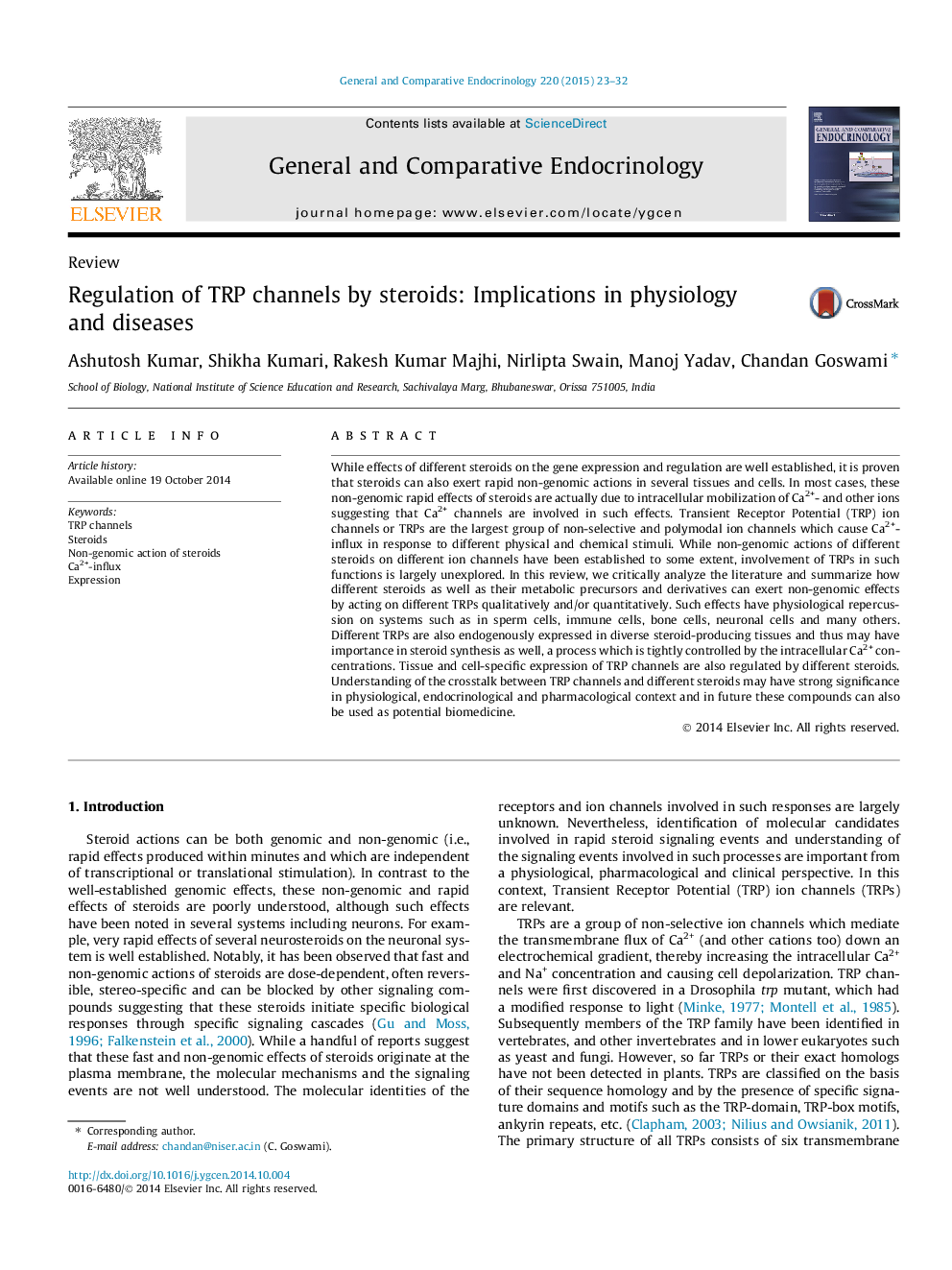| Article ID | Journal | Published Year | Pages | File Type |
|---|---|---|---|---|
| 2799936 | General and Comparative Endocrinology | 2015 | 10 Pages |
Abstract
While effects of different steroids on the gene expression and regulation are well established, it is proven that steroids can also exert rapid non-genomic actions in several tissues and cells. In most cases, these non-genomic rapid effects of steroids are actually due to intracellular mobilization of Ca2+- and other ions suggesting that Ca2+ channels are involved in such effects. Transient Receptor Potential (TRP) ion channels or TRPs are the largest group of non-selective and polymodal ion channels which cause Ca2+-influx in response to different physical and chemical stimuli. While non-genomic actions of different steroids on different ion channels have been established to some extent, involvement of TRPs in such functions is largely unexplored. In this review, we critically analyze the literature and summarize how different steroids as well as their metabolic precursors and derivatives can exert non-genomic effects by acting on different TRPs qualitatively and/or quantitatively. Such effects have physiological repercussion on systems such as in sperm cells, immune cells, bone cells, neuronal cells and many others. Different TRPs are also endogenously expressed in diverse steroid-producing tissues and thus may have importance in steroid synthesis as well, a process which is tightly controlled by the intracellular Ca2+ concentrations. Tissue and cell-specific expression of TRP channels are also regulated by different steroids. Understanding of the crosstalk between TRP channels and different steroids may have strong significance in physiological, endocrinological and pharmacological context and in future these compounds can also be used as potential biomedicine.
Related Topics
Life Sciences
Biochemistry, Genetics and Molecular Biology
Endocrinology
Authors
Ashutosh Kumar, Shikha Kumari, Rakesh Kumar Majhi, Nirlipta Swain, Manoj Yadav, Chandan Goswami,
